I toured a garden in Lee County about 14 years ago – it comes back like a fever dream. Spoiler alert: Later that month I found out I had pneumonia, so I probably did have a fever. Surely that explains why I can’t remember where it was, or who owned it, only that she was a lovely, kind woman. I remember vanilla bean, banana trees, a hand-hewn water feature. I remember the warm wood and tile in the owner’s kitchen and wishing I never had to go back to “real life.” My own Xanadu.
(Orchid Lane at the Edison and Ford Winter Estates, vintage postcard illustration)
So last week when I stumbled on the mention of the “Peace Jungle Gardens,” and its Tahitian-inspired botanicals, I thought for sure that was it. But some detective work from writer friend Stephanie Davis revealed the Peace Gardens were home to The Hut, a legendary Buckingham spot. I know it wasn’t there. But in searching, I’ve enjoyed a minds-eye tour of some of Lee County’s legendary gardens and favorite trees.
Courthouse Trees and Beloved Figs
When the “new” Lee County Courthouse was built in 1915, the good clubwomen of Fort Myers rallied around the historic oak tree on the courthouse grounds, insisting that it not be cut down. At that time it was believed to be about 75 years old.
(Courthouse oak tree, undated photo postcard)
On April 21,1938, the 200-plus women of the Plant, Flower, and Fruit Guild in Fort Myers, led by Jettie Burroughs, sold ice cream on the courthouse square and used the proceeds to brace up the old oak, with the hope that it would stand forever.
But it wasn’t to be. The tree began seriously ailing in the late 1990s. From 2001 to 2010, Lee County spent tens of thousands of dollars trying to save it. In 2011, commissioners gave up. After much discussion and controversy, a Fort Walton sculptor was commissioned to carve the oak tree into a sculpture of an eagle.
(Vintage postcard illustration, floridamemory.com)
Still standing: the unwieldy courthouse banyan. Late Fort Myers writer and historian Margaret Verdier Abell wrote that as long as a couple was sitting together under the romantic tree, everyone else pretended not to see them.
(Vintage postcard illustration)
One of the Edison home’s large Moreton Bay fig trees is also no longer with us. It succumbed to damages from a tropical storm in 1994, and souvenir seekers scavenged the wood.
But Lee County boasts two “champion” 100-plus-year-old Mysore figs – one off Broadway in Estero and one at Bonita Spring’s Shangri-la Springs resort. (Thank you, Anne Reed and Pamela Beckman for letting me know the Estero fig is still standing strong.)
Snail Heaven
In November 1938, expert malacologist (someone who studies shells and their animals) W.E. Lincoln opened the Garden of Snails at Palmlee Park in Fort Myers. No one had ever tried devoting a whole park to tree snails (genus: liguus)—especially imported ones– and probably for good reason. Lincoln hired Seminole Indians to scout 2,000 specimens of snails in the Everglades. Another 500 came from Cuba and 500 more from the West Indies. All these thousands of snails were then set loose on the citrus, mango, and avocado trees in Palmlee Park!
Hundreds of participants in a garden tour in March 1939 visited elegant botanical collections throughout the city, including the Edison home, Burroughs residence, and the luscious Billy’s Creek abode of Mr. and Mrs. J.C. Elms. The March 4 Fort Myers News-Press reported the group took a “quick” trip through Palmlee Park, where, “For the purposes of the tour, Mr. Lincoln set a number of the snails into motion.”
In summer 1939, Lincoln took his liguus with him to Bonita Springs, where he opened a business selling sea shells, retail and wholesale.
(Florida tree snails, Wikipedia Commons, original image from Bailey-Matthews Shell Museum, Sanibel Island)
Mina’s Garden
Some favorite stops on that March tour were at the Edison home. The newspaper said Mrs. Mina Edison Hughes (she married her childhood sweetheart after Thomas died) graciously allowed a tour of the grounds, including her stunning moonlight garden.
(Vintage postcard illustration)
As is recounted in this wonderful 2014 story by Anne Reed, the serene garden designed for Mina Edison at the Edison and Ford Winter Estates is placed where Thomas Alva Edison’s laboratory once sat.
Henry Ford plucked up the inventor’s original Fort Myers laboratory in 1928, much to the dismay of town leaders, who felt it would be a tourist attraction. The lab, along with some of the topsoil under it, was transported to Ford’s eclectic museum in Dearborn, Mich.
Ford’s museum, Greenfield Village, also holds such Edison-related artifacts as the coffee pot he and Ford took on their “vagabond” camping trips and a test tube filled with what is purported to be the inventor’s last breath.
Mangoes and More
“Orchid Lane,” at the Edison home, pictured at top, is another longtime favorite. Mango trees have bloomed in abundance since the earliest days of Fort Myers, and they made the perfect place for Mr. and Mrs. Edison to mount orchids.
It’s thought that Henry Perrine – a botanist massacred at Indian Key in 1840 – introduced the mango to Florida. The Tampa settlers who planted crops in Fort Myers in the late 1850s already had mango trees at the former fort site when James Evans came. In the early 1880s, British physician William Hanson brought innumerable mango seeds with him from Key West, and trees could be found all over his “Hanson addition” subdivision, just south of the main town site.
For a modern tale of mangos, mothers, and “only in Lee County,” pick up Annabelle Tomatich’s The Mango Tree, out Tuesday! Check out the New York Times review here!





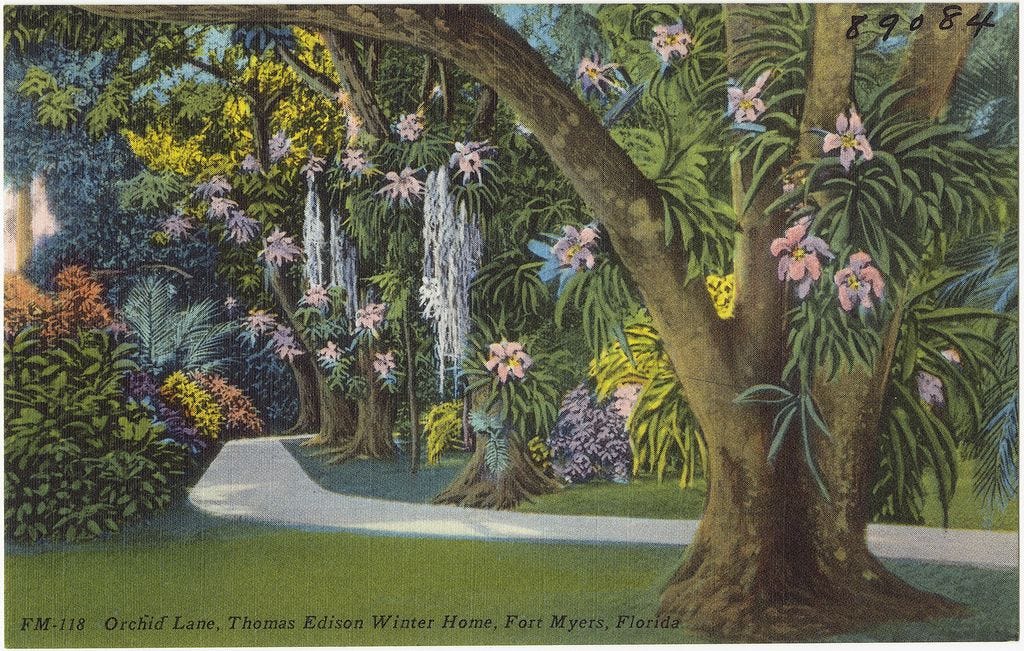
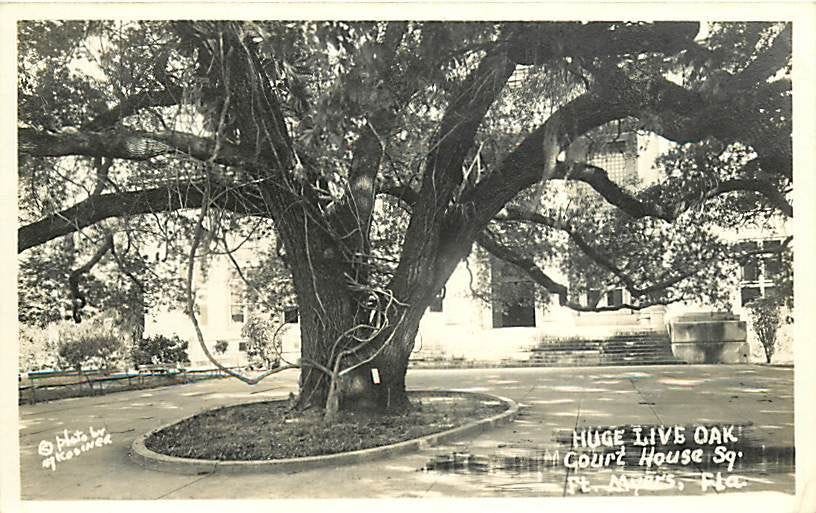
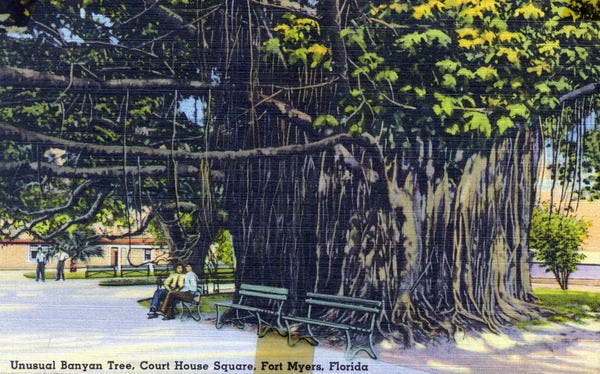
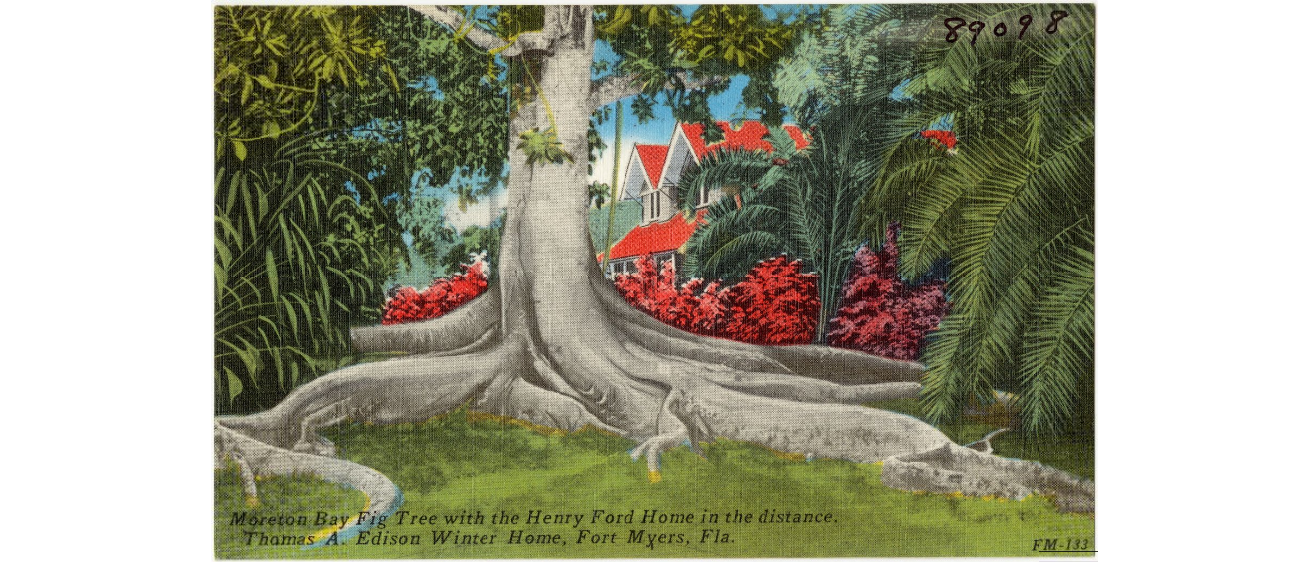
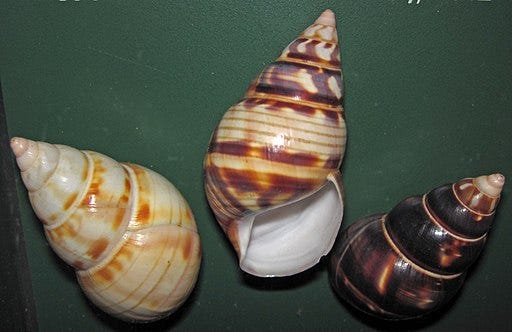
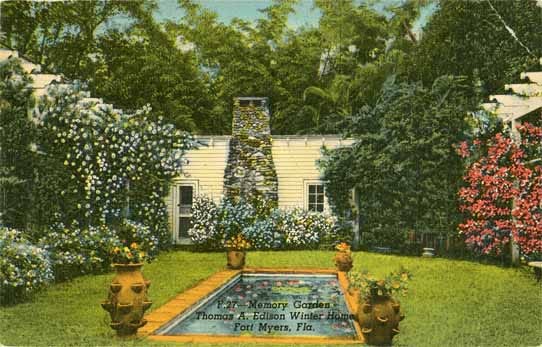
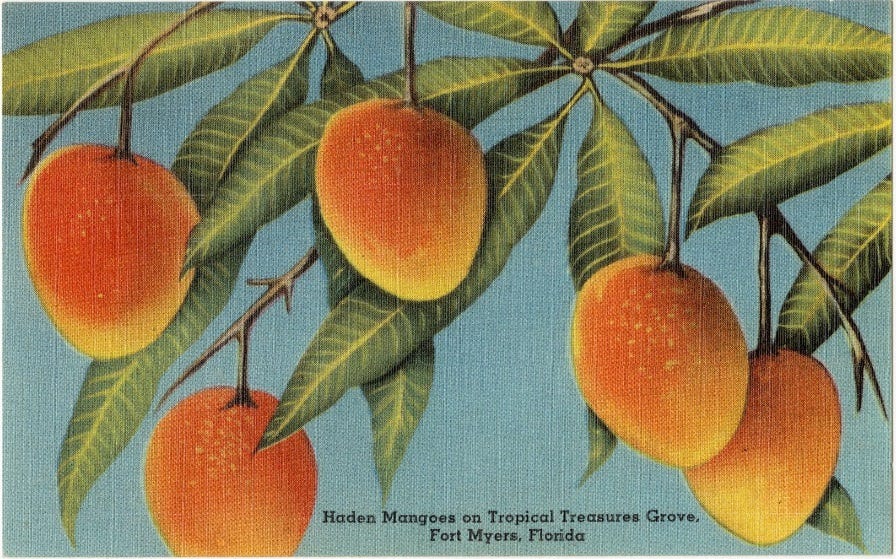
Oh wow I LOVE these vintage illustrations and learning about these cool little places and history of Florida. Thanks for writing this!!
I freaking LOVED this. I love gardens! I love trees! I love history! And that is so weird about the snails. Thank you for this. Oh and the illustrations are lovely .